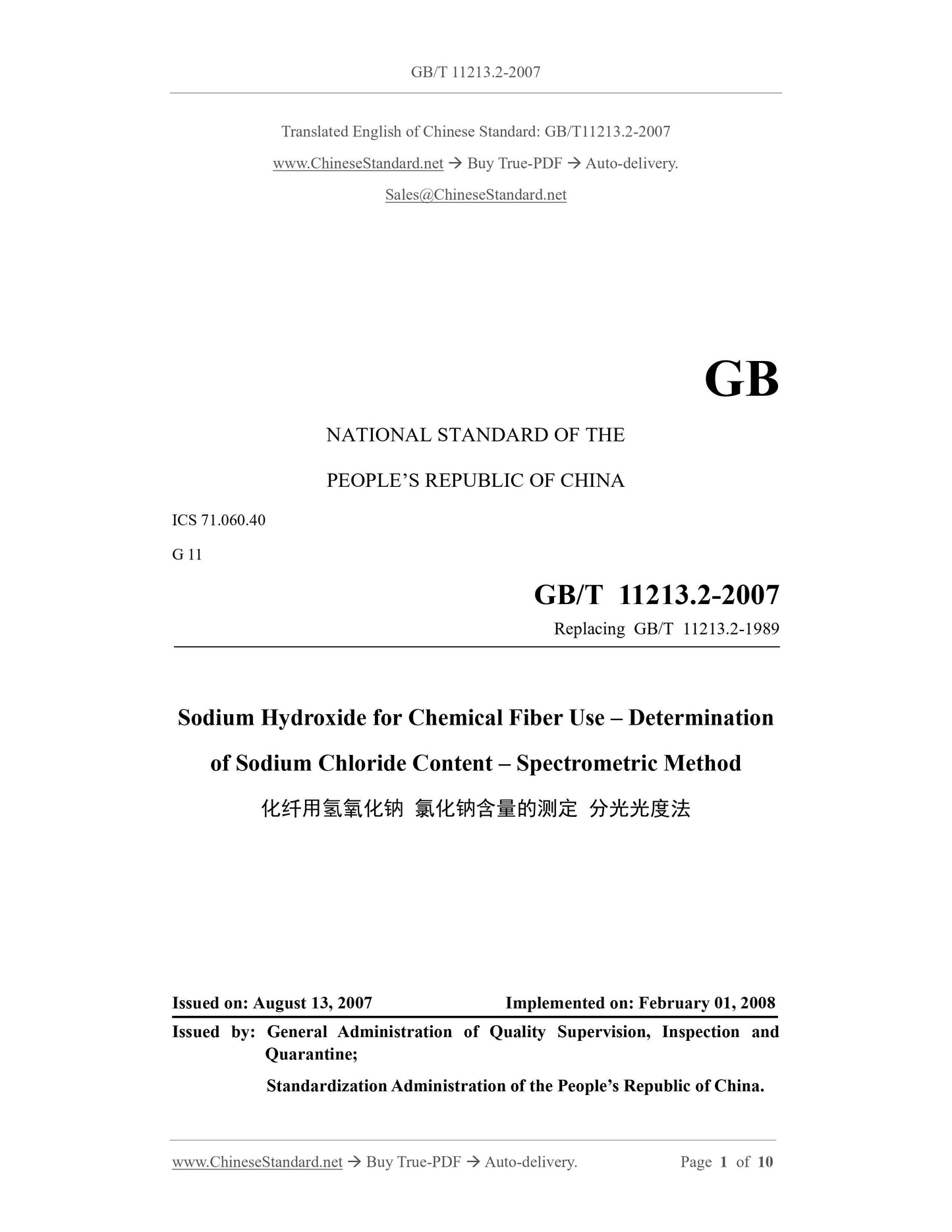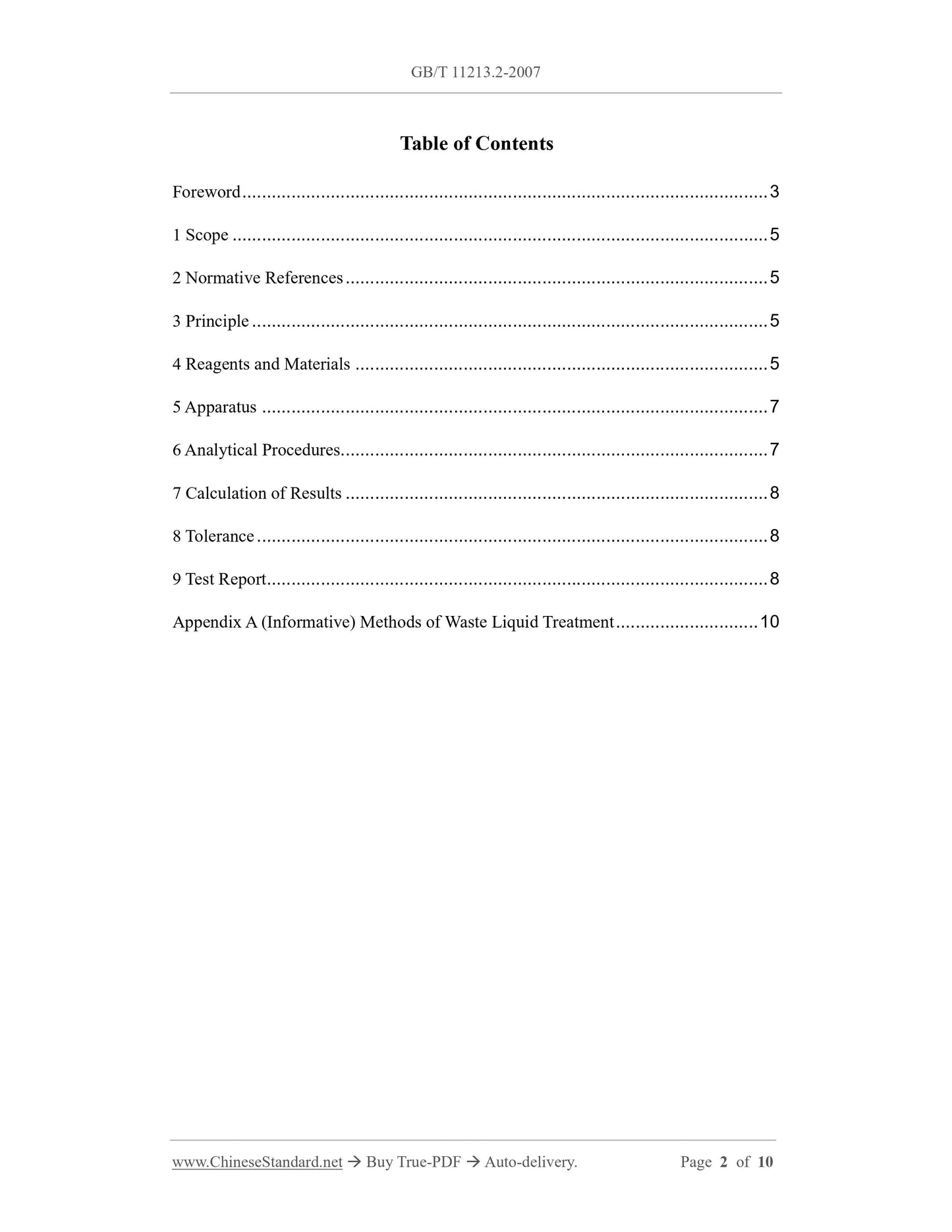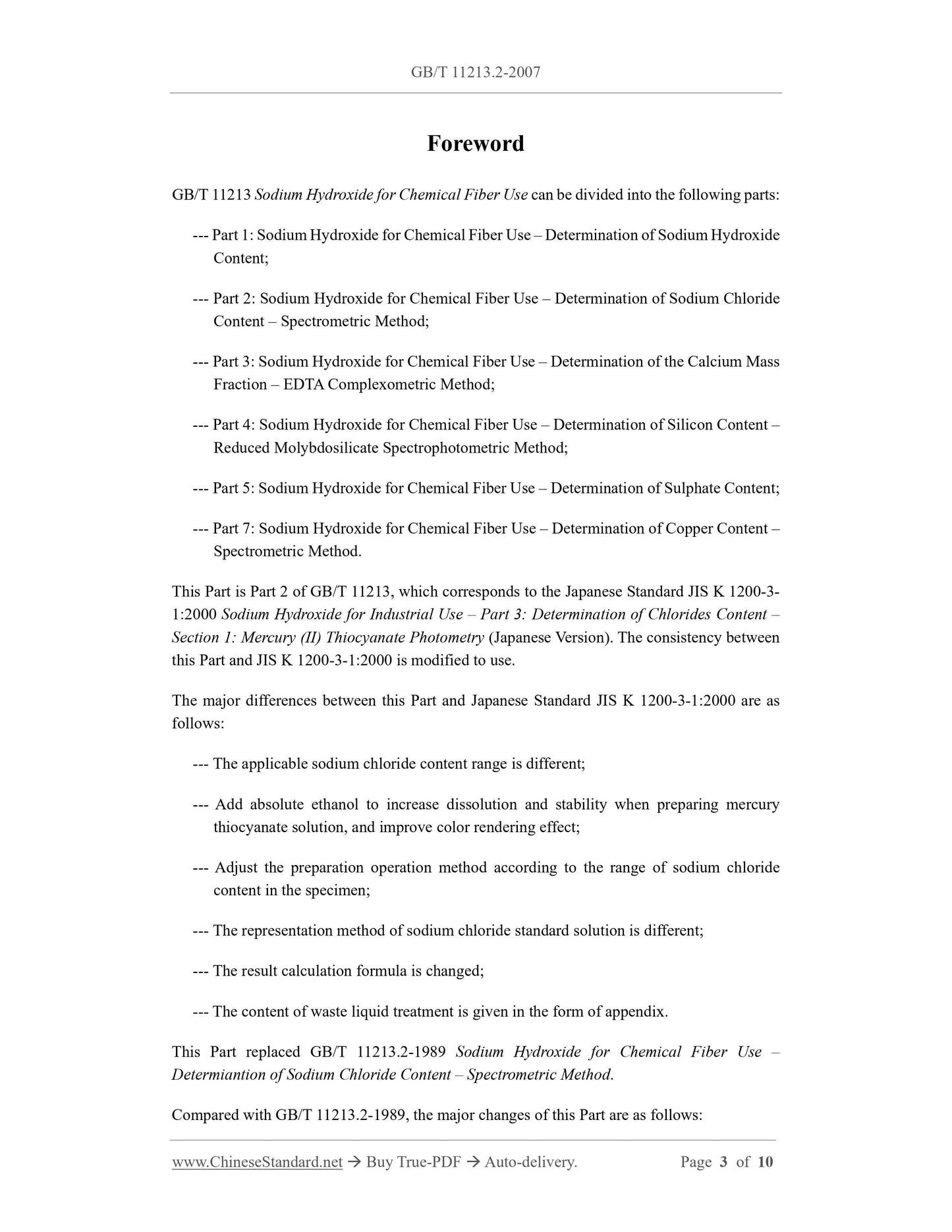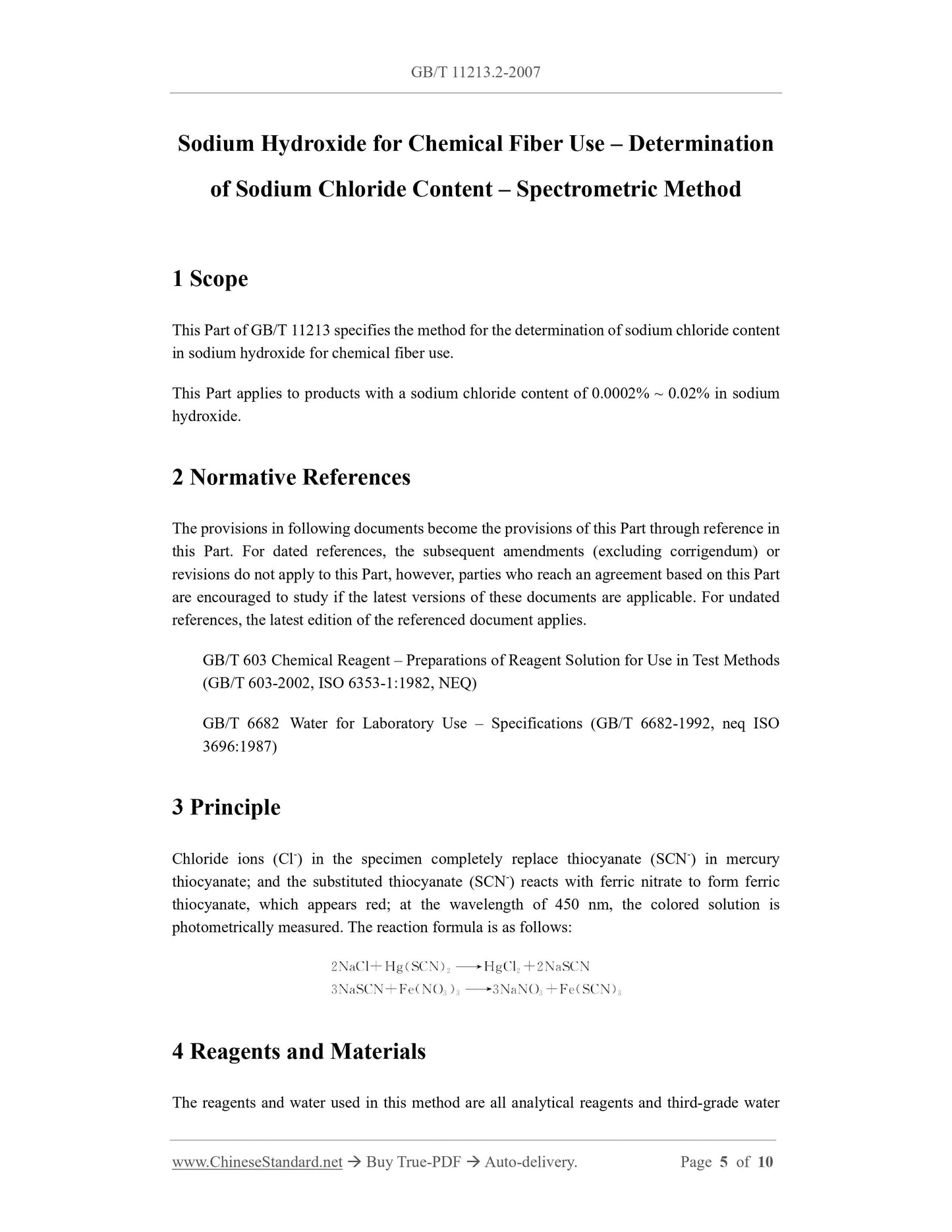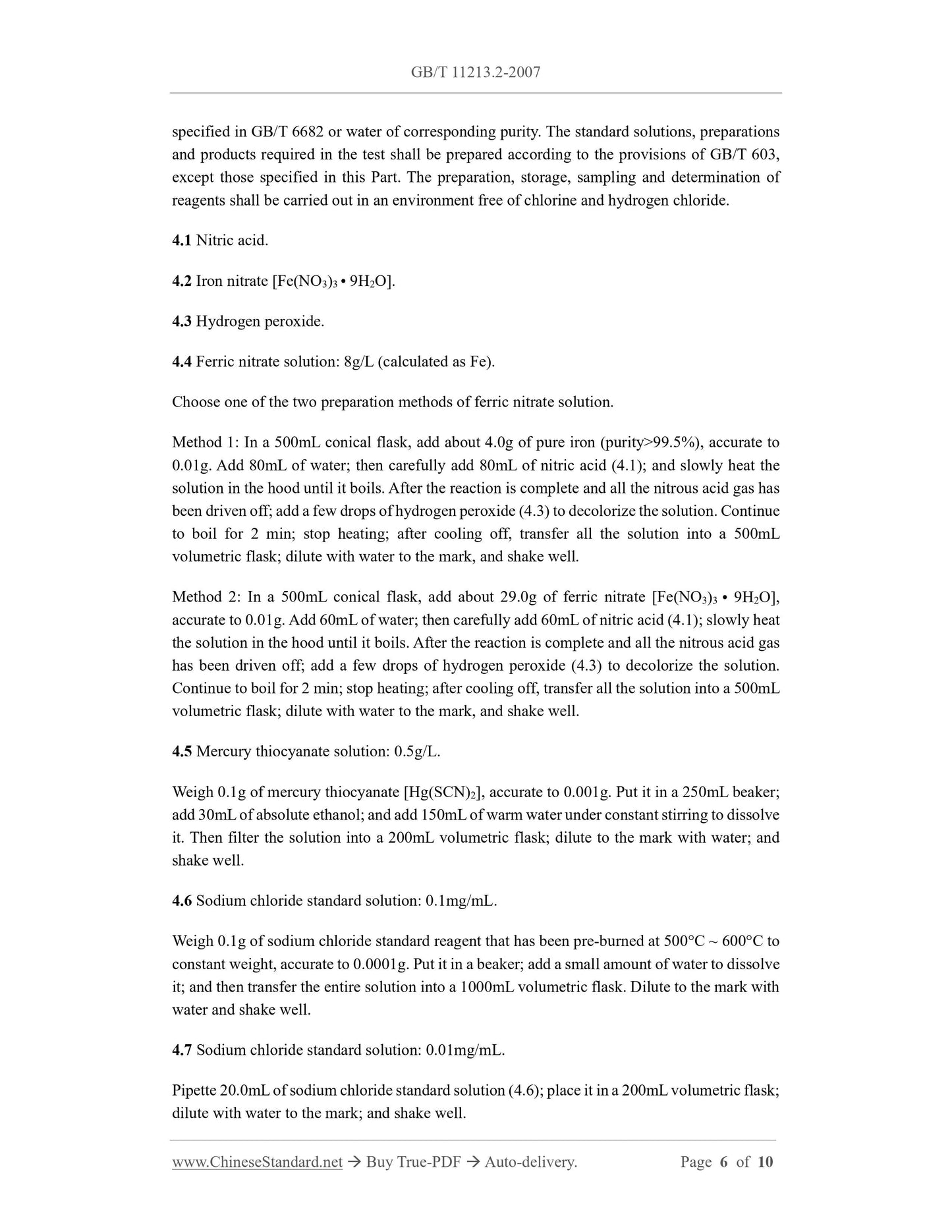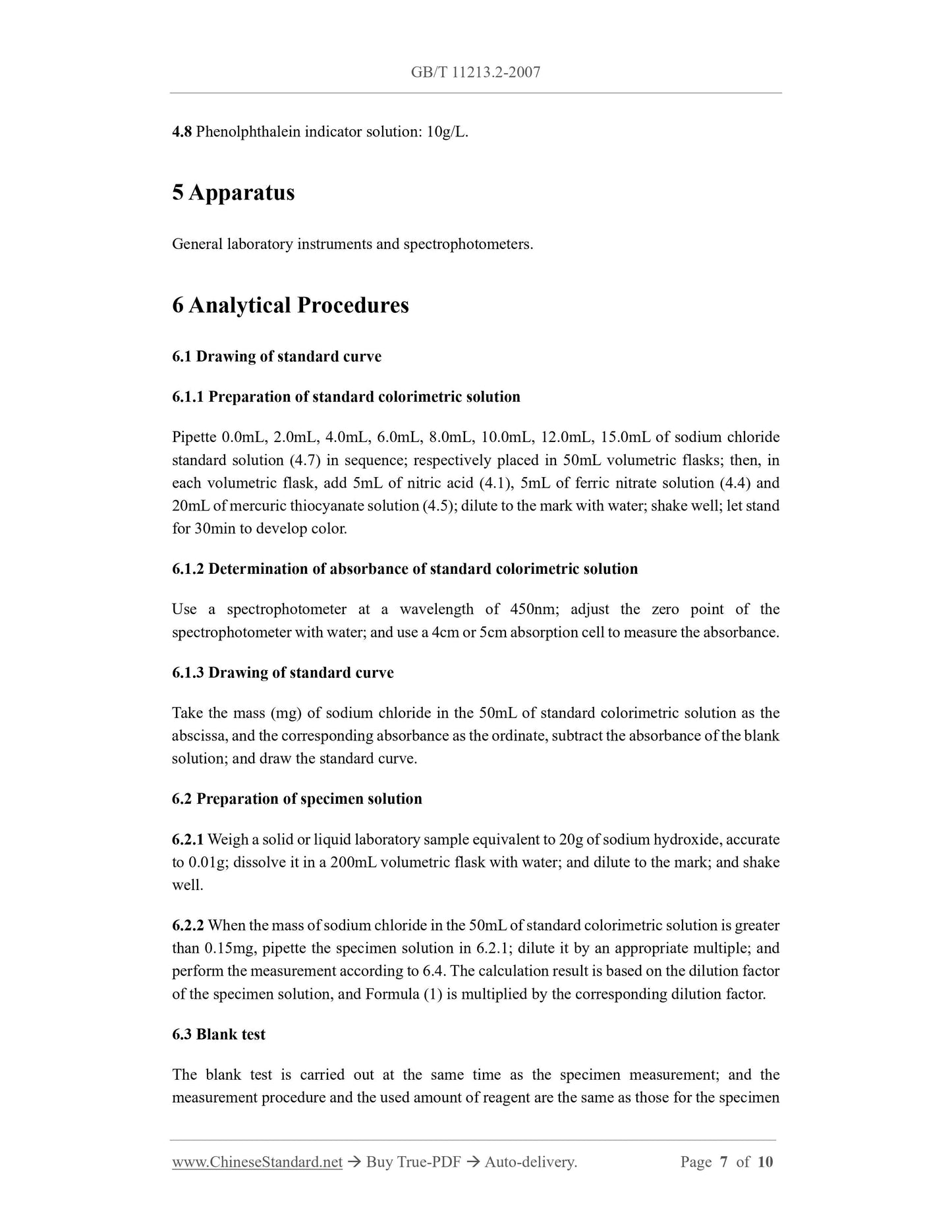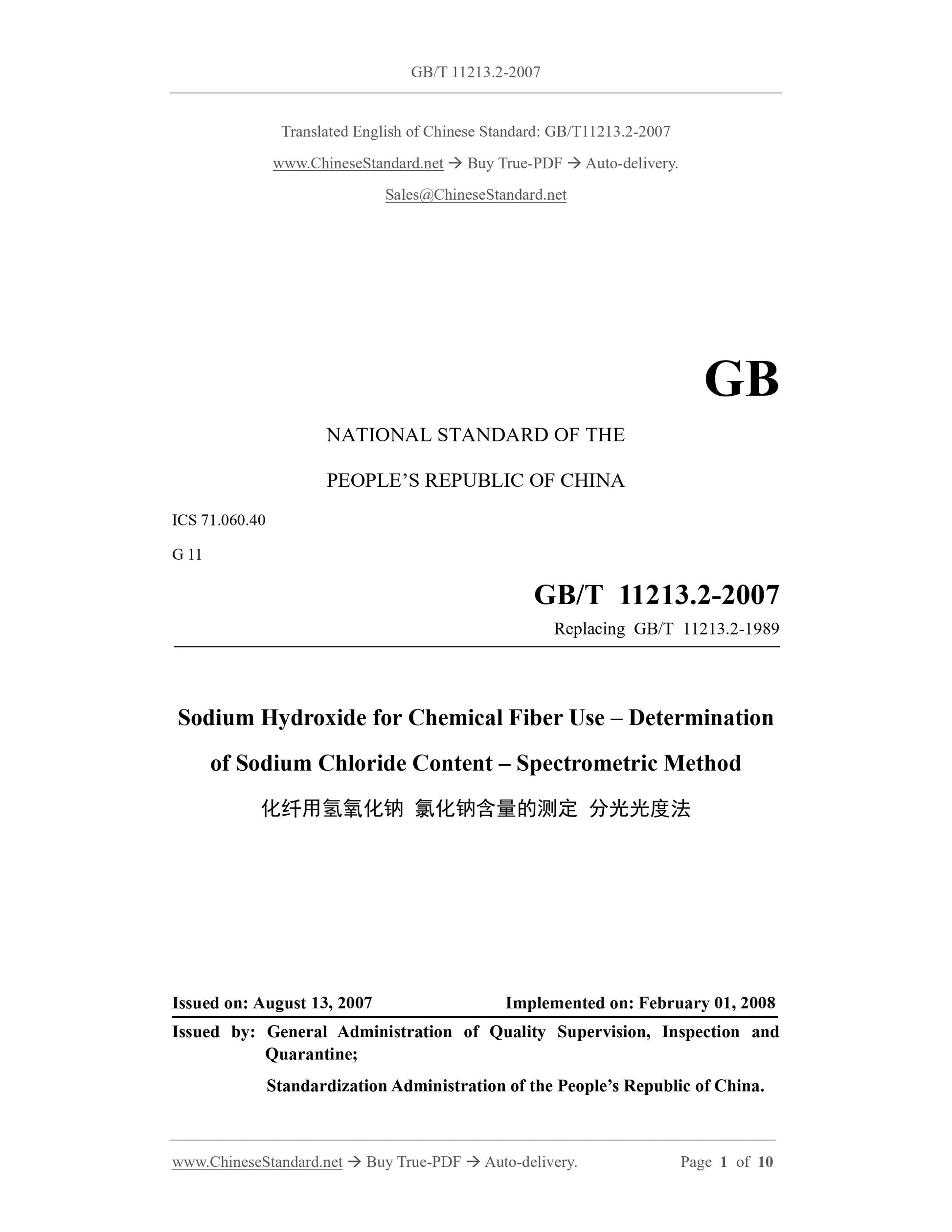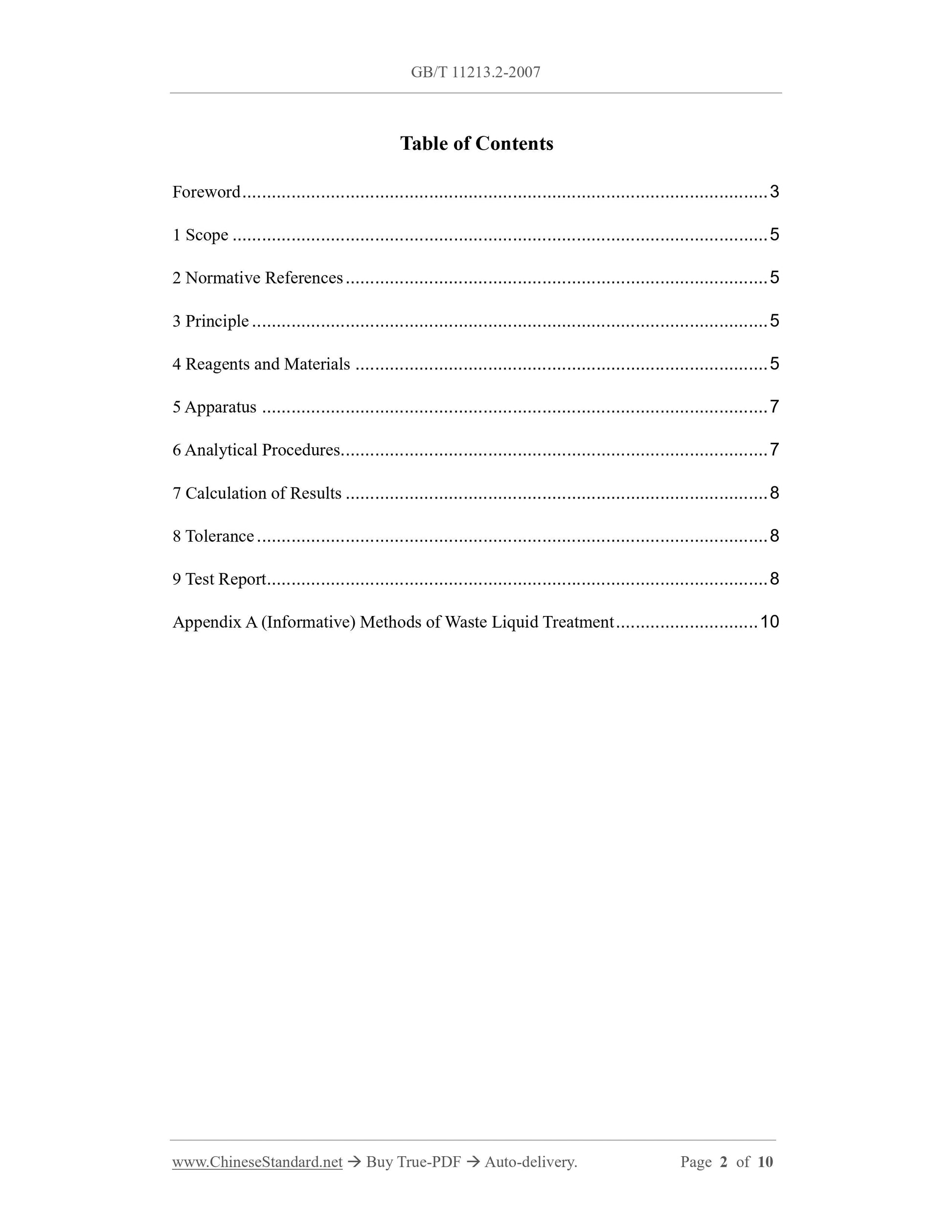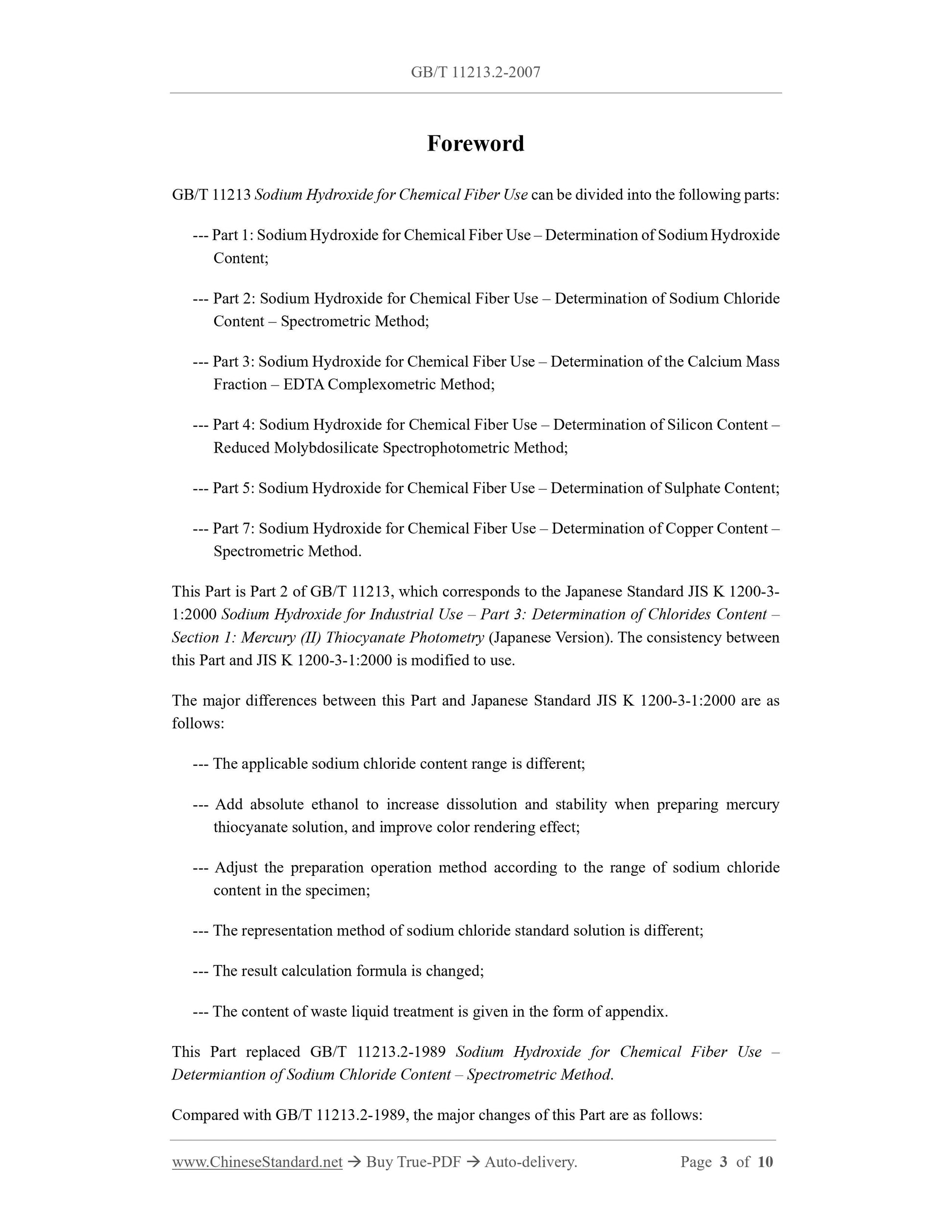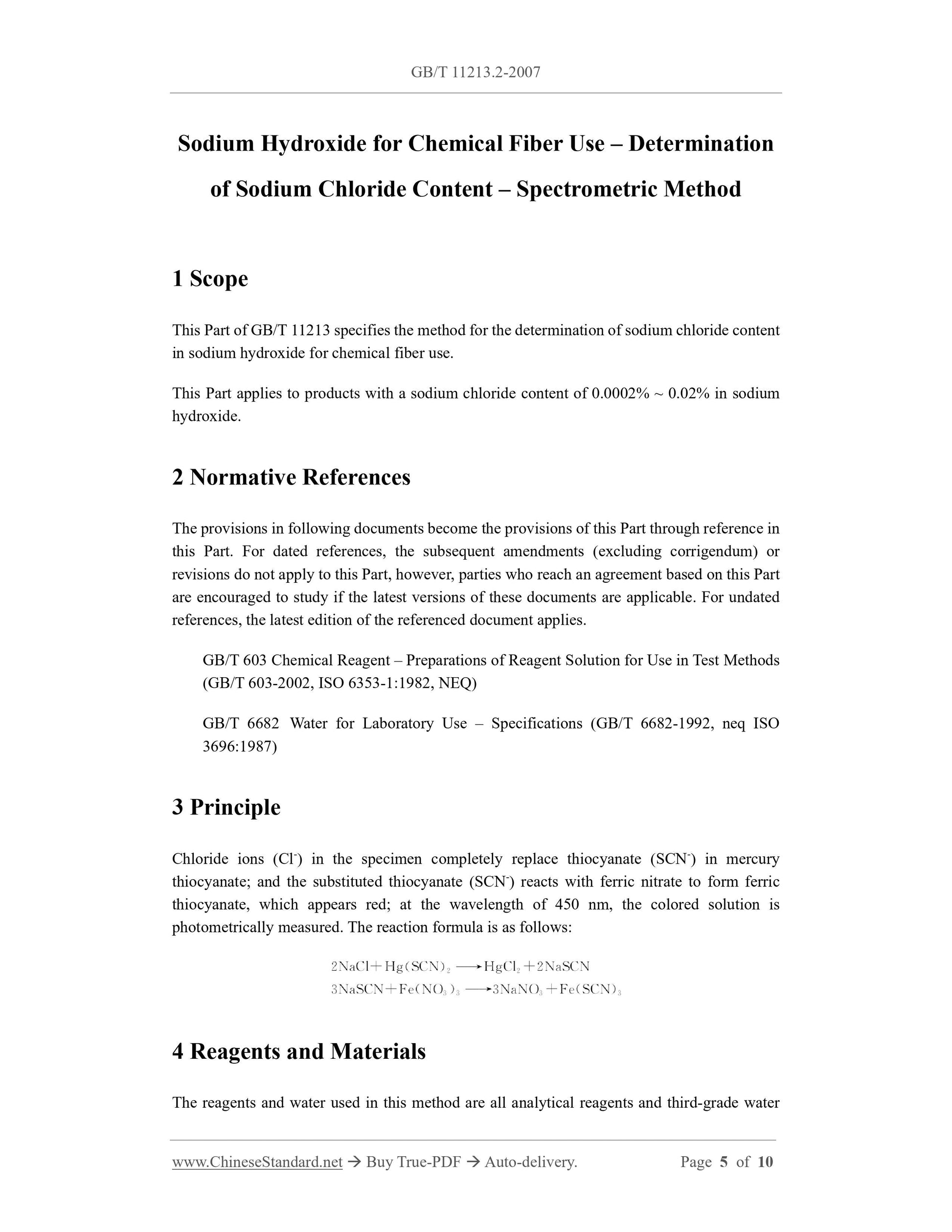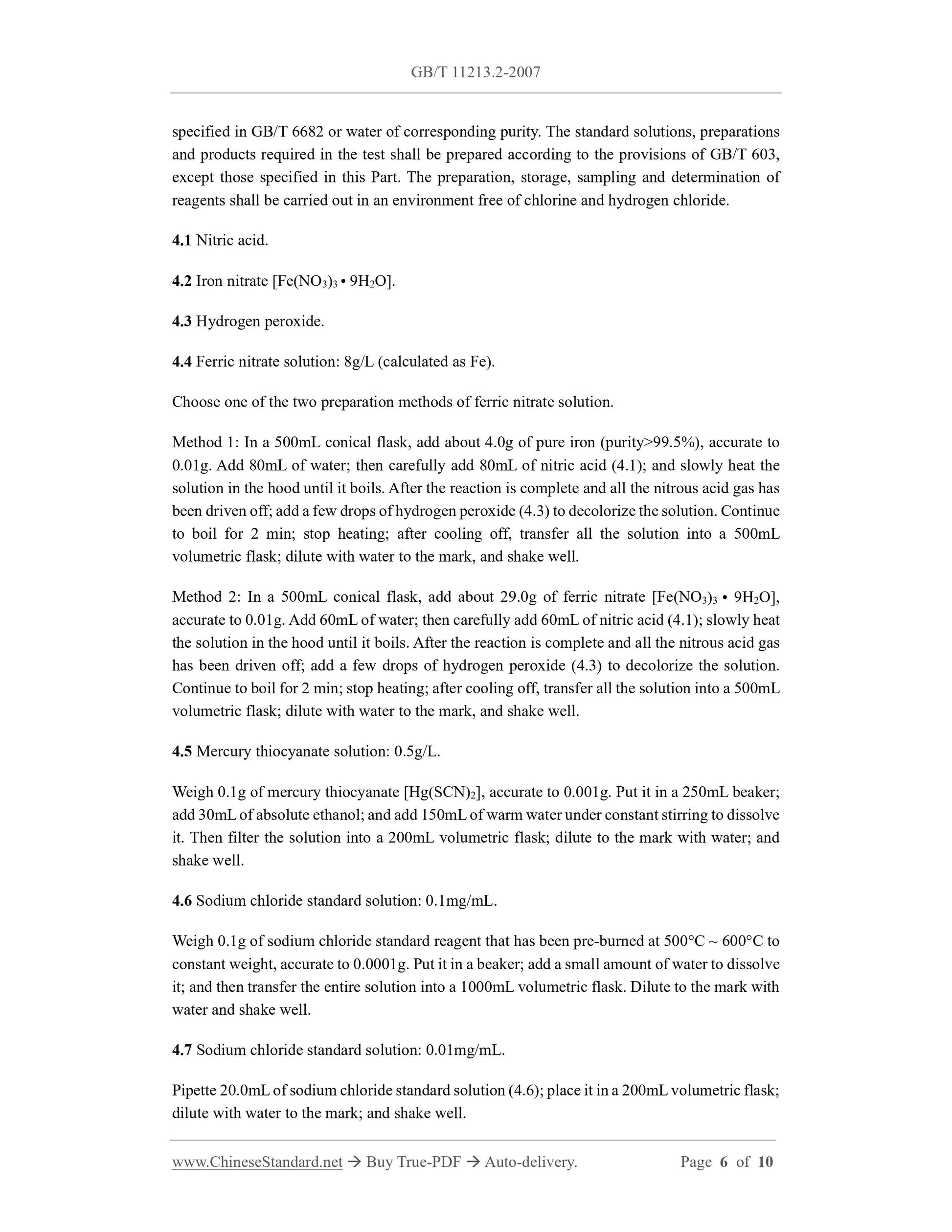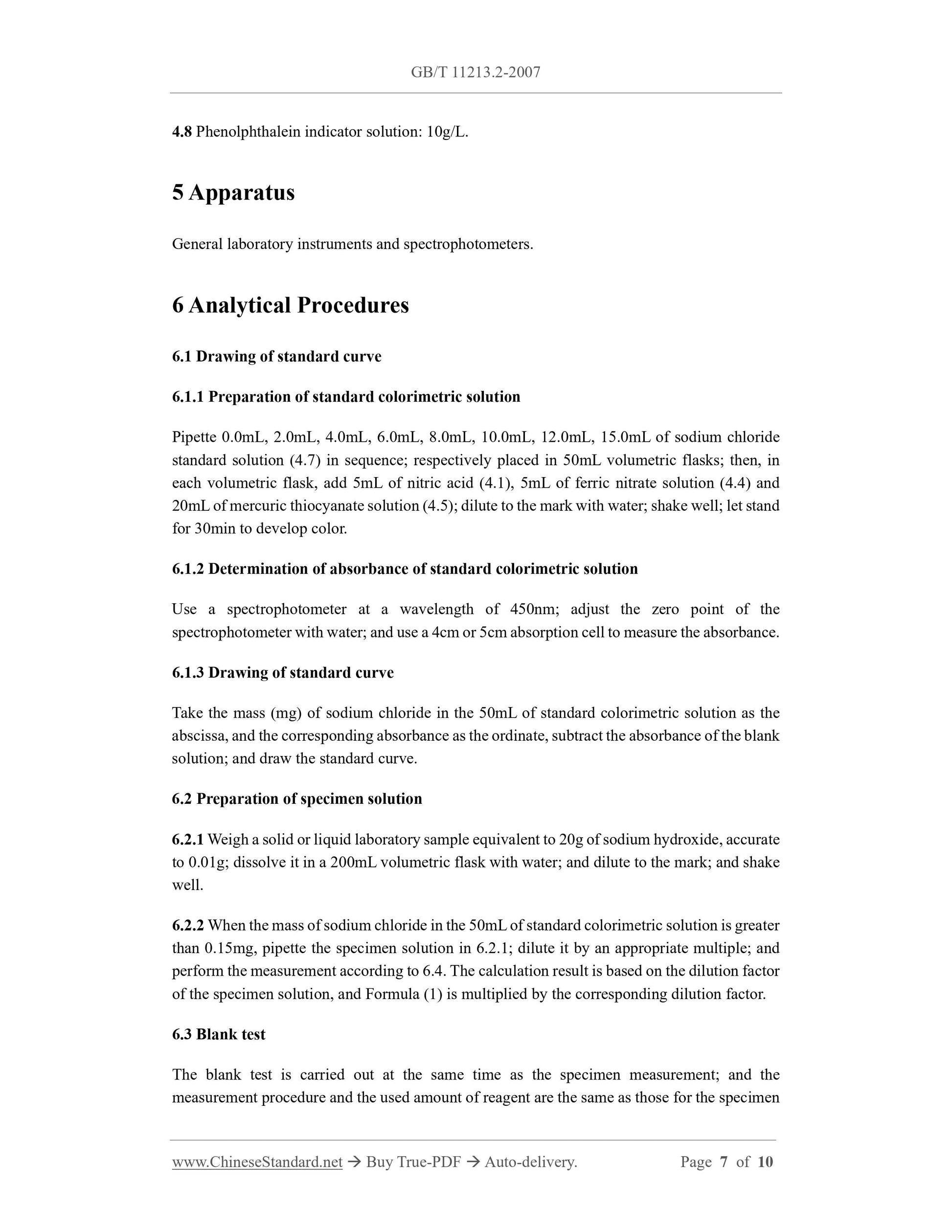1
/
of
6
www.ChineseStandard.us -- Field Test Asia Pte. Ltd.
GB/T 11213.2-2007 English PDF (GB/T11213.2-2007)
GB/T 11213.2-2007 English PDF (GB/T11213.2-2007)
Regular price
$130.00
Regular price
Sale price
$130.00
Unit price
/
per
Shipping calculated at checkout.
Couldn't load pickup availability
GB/T 11213.2-2007: Sodium hydroxide for chemical fiber use - Determination of sodium chloride content - Spectrometric method
Delivery: 9 seconds. Download (and Email) true-PDF + Invoice.Get Quotation: Click GB/T 11213.2-2007 (Self-service in 1-minute)
Newer / historical versions: GB/T 11213.2-2007
Preview True-PDF
Scope
This Part of GB/T 11213 specifies the method for the determination of sodium chloride contentin sodium hydroxide for chemical fiber use.
This Part applies to products with a sodium chloride content of 0.0002% ~ 0.02% in sodium
hydroxide.
Basic Data
| Standard ID | GB/T 11213.2-2007 (GB/T11213.2-2007) |
| Description (Translated English) | Sodium hydroxide for chemical fiber use - Determination of sodium chloride content - Spectrometric method |
| Sector / Industry | National Standard (Recommended) |
| Classification of Chinese Standard | G11 |
| Classification of International Standard | 71.060.40 |
| Word Count Estimation | 7,793 |
| Date of Issue | 2007-08-13 |
| Date of Implementation | 2008-02-01 |
| Older Standard (superseded by this standard) | GB/T 11213.2-1989 |
| Regulation (derived from) | China National Standard Approval Announcement2007 No.8 (Total No.108) |
| Issuing agency(ies) | General Administration of Quality Supervision, Inspection and Quarantine of the People's Republic of China, Standardization Administration of the People's Republic of China |
| Summary | This standard specifies the method for the determination of chemical fiber with sodium chloride content. This section applies to sodium chloride content of 0. 000 2% to 0. 02 % of the product. |
Share
